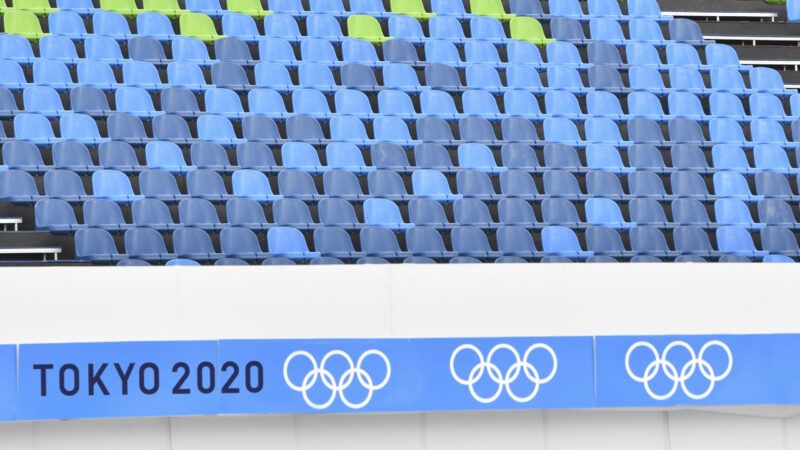With Spectators Banned, Tokyo Olympics Look Like an Even Bigger Money Pit
More than 30 venues, some of which predate the Olympics but many of which were purpose-built at public expense, will be occupied solely by coaches, athletes, and judges.

Spectators will be banned from all 339 events to be held during the upcoming Olympic Games, which are scheduled to begin in Tokyo on July 23, after a state of emergency was declared in that region of Japan this week.
These Olympics had already been dubbed the "No-Fun Olympics"—and by none other than the typically stoic Associated Press—due to pandemic-related policies of testing, quarantining, and limited attendance that were expected to severely curtail the usual athletic bacchanalia enjoyed by athletes and fans (previously, events were expected to be capped at 10,000 spectators each). Now they will be the No-Fans Games as well. More than 30 venues, some of which predate the Olympics but many of which were purpose-built at public expense, will be occupied solely by coaches, athletes, and judges.
The most obvious impact of the empty stadiums will be a less festive atmosphere for the millions of people tuning in on television to watch the Olympics—expect a throwback to last summer's deeply weird experience of watching home runs bang into empty bleachers beyond outfield walls. But the most significant impact of the ban on Olympic spectators is to make it even more obvious how fiscally ruinous hosting the Olympics can be.
The Tokyo Olympics were already forecast to be the most expensive Summer Olympics in history, with a price tag estimated at $26 billion. That's more than three times as expensive as the $7 billion in public costs promised by Tokyo's initial bid to the International Olympic Committee. Postponing the event by a full year because of the COVID-19 pandemic might have added another $2 billion, based on unofficial estimates.
The Olympics are almost always a money-losing operation for the host city and country. The costs continue accumulating long after the Olympics are gone, as there isn't much demand for high-quality arenas to host international water polo or curling competitions. But, usually, local and national officials can point to tourism dollars—current and future—to justify some of the cost. Not so much this time.
Like it has in other aspects of the sports economy, the COVID-19 pandemic has stripped away those mostly vapid justifications for spending billions of public dollars to host a two-week-long party.
The ban on spectators is somewhat understandable in the context of Japan's lagging vaccination rates. Only 16 percent of Japan's population is fully vaccinated—a tally that lags far behind the United States (48 percent) and most of the developed world. If there's anything to blame for this late policy change regarding the Olympics, it's not the pandemic but rather the lack of vaccines, which are highly effective even against the newly emerging COVID strains.
Still, it's good that the Olympics are happening. Canceling them in the face of what's an increasingly manageable (and fading) public health crisis would have been a cowardly act by the Japanese government—though also a democratic one, since polls show that most residents of Japan are opposed to the Olympics happening. The money is already spent, so the games should go on even under less-than-ideal circumstances.
But the price tag of the Tokyo Olympics—starkly shorn of any soft political benefits like international goodwill or tourism largesse—should serve as a warning to cities and nations that will bid for future international sporting events.
Americans, in particular, should take notice. The estimated public cost of the 2028 Summer Olympics in Los Angeles: $6.9 billion. But there's plenty of time for that to change too.
Show Comments (88)